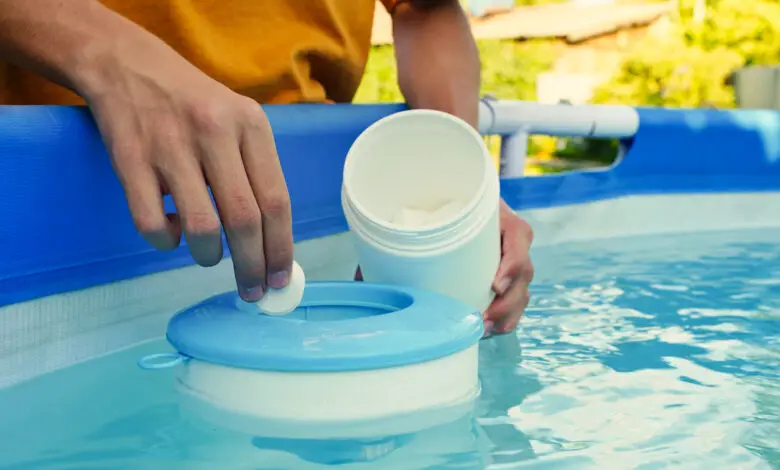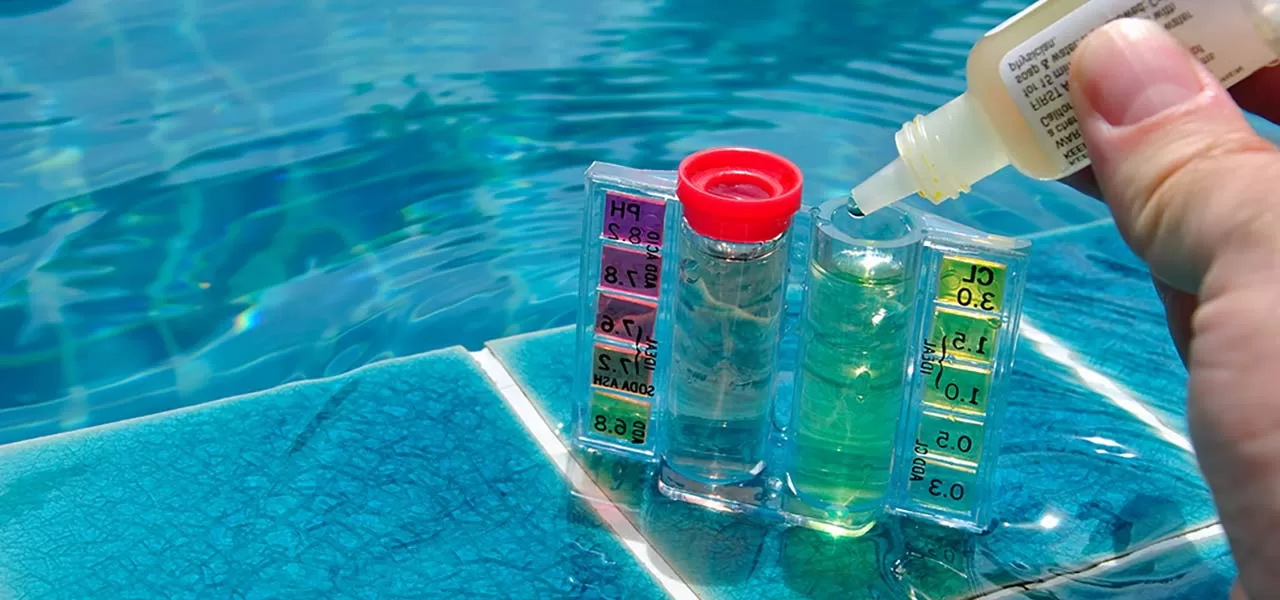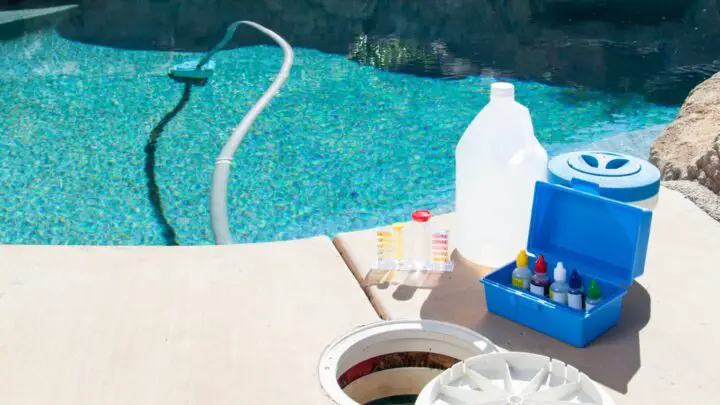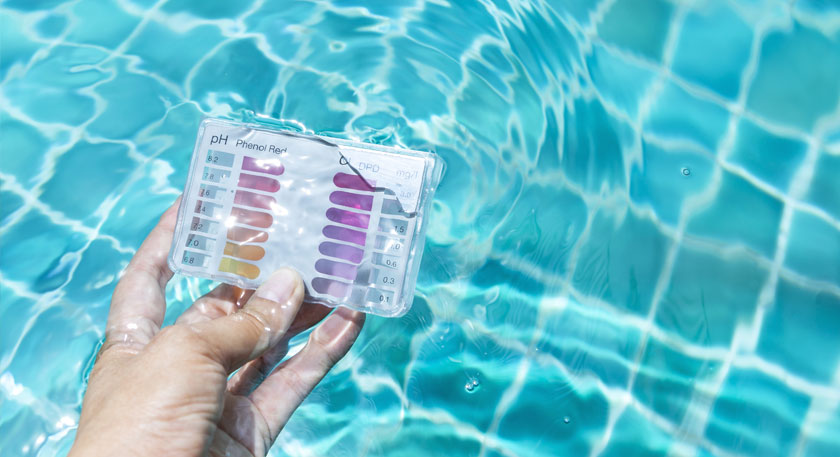A Beginner’s Guide to Pool Chemicals

Owning a pool is a luxury many dream of. However, maintaining crystal clear, safe and healthy water can feel like a science experiment. Let’s have a look into the world of chemicals, ensuring that your pool is ready for all the cannonballs and swim races you can manage.
Understanding The Chemistry

Before delving into the specifics of each chemical, it is crucial to understand the underlying reasons for their use. Pool chemicals serve multiple purposes, including balancing the water’s pH levels, eliminating various contaminants, and effectively preventing the growth of harmful bacteria and algae. By performing these functions, they contribute to the creation and maintenance of a healthy, clean, and safe swimming environment for all to enjoy.
The Risks of Not Using Chemicals
Failing to use pool chemicals can lead to a series of troublesome and potentially harmful outcomes. Without the correct balance of sanitising chemicals, your pool can quickly become a breeding ground for bacteria and algae, posing health risks to swimmers. These organisms can cause skin irritation, infections, and in severe cases, waterborne diseases. Furthermore, lack of appropriate chemicals can disrupt the balance of pH levels. Water with a pH level that’s too high or too low can cause eye irritation, cloudy water, and damage to the equipment. In essence, foregoing the use of pool chemicals compromises not only the clarity and aesthetic appeal of your pool but also its safety and longevity.
Adding Chemicals
When adding chemicals to your pool, it is crucial to always follow the specific instructions provided by the manufacturer. Additionally, it is important to never mix different chemicals together. By adding chemicals to water instead of water to chemicals, you can prevent any potential strong reactions that may occur, thereby ensuring the safety and well-being of everyone involved.
Key Chemicals

Chlorine
Chlorine, the most commonly used sanitiser in pools, is a powerful agent that effectively eliminates bacteria, viruses, and other harmful microorganisms, ensuring a clean and sanitary swimming environment. It is available in various forms such as tablets, granules, or liquid, providing flexibility for pool owners. To maintain optimal sanitation, it is recommended to keep the chlorine level at 1-3 parts per million (ppm), guaranteeing a safe and enjoyable swimming experience for all.
pH Increasers and Reducers
Maintaining a balanced pH level in swimming Pools Sydney is crucial for both the effectiveness of chlorine and the comfort of swimmers. The ideal pH range, which should be between 7.4 and 7.6, ensures that the chlorine is able to efficiently sanitise the water while preventing any discomfort or irritation to the swimmers’ skin and eyes.
Alkalinity Increaser
Total alkalinity refers to the water’s capacity to resist changes in pH levels, acting as a crucial buffer. Maintaining a well-balanced total alkalinity within the range of 80 to 120 parts per million (ppm) plays a vital role in stabilising the pH levels of the water. One commonly employed method to increase the total alkalinity is by introducing sodium bicarbonate, a versatile chemical compound widely used for this purpose.
Calcium Hardness Increaser
This chemical is commonly used to precisely regulate the concentration of dissolved calcium in water. Maintaining a proper hardness level of 200-400 ppm is crucial in order to safeguard the pool surface and equipment from potential damage.
Testing and Water Balance

Testing
Regularly testing your water is crucial for maintaining optimal chemical balance. By using a range of testing kits and digital metres, you can easily monitor key components like chlorine, pH, total alkalinity, and calcium hardness. Experts recommend conducting these tests at least once a week to ensure your pool remains safe and enjoyable. However, during periods of heavy use or extreme weather conditions, it’s advisable to test more frequently to prevent any unforeseen issues. So, take the time to check your water regularly and enjoy a hassle-free swimming experience all season long!
Adjusting Water Balance
Once you have received your test results, you can proceed to make any necessary adjustments to achieve optimal water balance in your pool. This can be achieved by adding the appropriate pool chemicals in the recommended quantities. Always remember to carefully read and follow the manufacturer’s instructions when adding any chemical to your pool, ensuring safety and effectiveness. It is worth noting that adjustments to one component of the water balance can have an impact on others, creating a delicate equilibrium. Therefore, it is crucial to regularly retest the water and readjust as necessary, maintaining a harmonious and pristine pool environment for your enjoyment.
The Risks of Improperly Balancing Pool Chemicals
When it comes to pool maintenance, achieving the right balance of chemicals is critical. Improperly balanced chemicals can have several unwanted effects. For starters, it can lead to premature wear and tear on your pool equipment, which can be costly to repair or replace. It can also cause scaling on the surfaces and plumbing, which is aesthetically unpleasing and can reduce the efficiency of your pool’s circulation system. On the health front, an imbalanced pool can be severely irritating to the skin and eyes of swimmers, causing discomfort and potentially discouraging use of the pool. Furthermore, incorrect chemical levels can render your sanitising chemicals less effective, leaving your pool vulnerable to bacteria and algae growth. Ultimately, failing to properly balance your chemicals can lead to a range of problems, from increased costs and maintenance to health risks for swimmers. So, it’s clear that a well-balanced pool is not just about clear water, but is also integral to the longevity of pool equipment and the health and enjoyment of swimmers.
Conclusion
Keeping a swimming pool clean, safe, and ready for use requires a delicate balance of chemistry and regular maintenance. Pool chemicals play a crucial role in maintaining pH, sanitising against microorganisms, and protecting equipment. Regular testing, adjustments, and routine cleaning tasks ensure a clear, healthy, and inviting pool. However, be aware that each adjustment affects other parameters, requiring continuous monitoring. Maintaining a pool requires diligence and understanding, but the result is a delightful and safe swimming experience for all.
